-
 Bitcoin
Bitcoin $104,338.8798
-0.02% -
 Ethereum
Ethereum $2,552.8936
2.18% -
 Tether USDt
Tether USDt $1.0000
-0.01% -
 XRP
XRP $2.4243
2.34% -
 BNB
BNB $675.7113
2.67% -
 Solana
Solana $175.5721
0.82% -
 USDC
USDC $0.9998
0.01% -
 Dogecoin
Dogecoin $0.2479
6.22% -
 Cardano
Cardano $0.8257
3.15% -
 TRON
TRON $0.2708
3.27% -
 Sui
Sui $4.1637
4.94% -
 Chainlink
Chainlink $17.3090
4.40% -
 Pi
Pi $1.5279
55.84% -
 Avalanche
Avalanche $25.3164
2.41% -
 Shiba Inu
Shiba Inu $0.0...01727
8.07% -
 Stellar
Stellar $0.3145
3.10% -
 Hedera
Hedera $0.2136
2.71% -
 Toncoin
Toncoin $3.5019
3.09% -
 Hyperliquid
Hyperliquid $24.8761
0.84% -
 Polkadot
Polkadot $5.2190
2.69% -
 Bitcoin Cash
Bitcoin Cash $413.8147
0.34% -
 UNUS SED LEO
UNUS SED LEO $8.5046
3.61% -
 Litecoin
Litecoin $102.3345
1.24% -
 Monero
Monero $340.3910
3.63% -
 Pepe
Pepe $0.0...01477
13.01% -
 Bitget Token
Bitget Token $4.9160
1.24% -
 Dai
Dai $1.0000
0.01% -
 Ethena USDe
Ethena USDe $1.0001
-0.04% -
 Uniswap
Uniswap $7.1120
0.33% -
 Bittensor
Bittensor $461.3829
1.85%
What does NEO mean? How does NEO support smart contracts?
NEO, known as "Chinese Ethereum," digitizes assets using smart contracts, offering a robust development environment and the NeoVM for secure, efficient execution.
May 12, 2025 at 01:00 pm
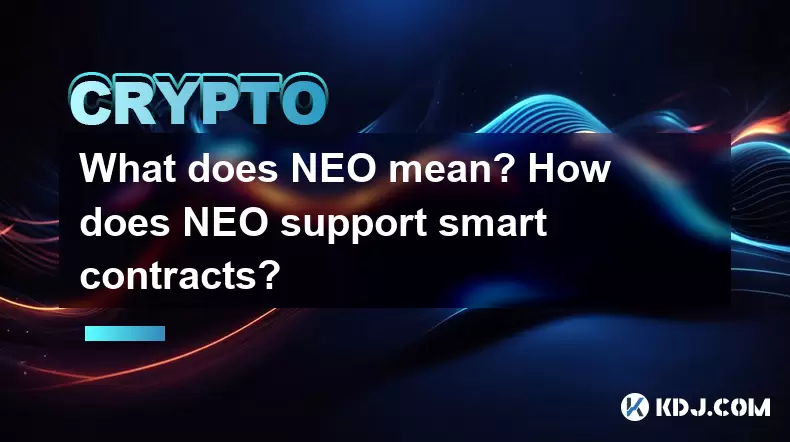
What does NEO mean? How does NEO support smart contracts?
NEO, often referred to as the "Chinese Ethereum," is a blockchain platform and cryptocurrency that aims to digitize assets and automate the management of digital assets using smart contracts. The term "NEO" itself has a dual meaning: it stands for "new" in Greek, signifying a new era in blockchain technology, and it is also an acronym for "Neo," a term meaning "young" or "new" in various languages, symbolizing innovation and the future of digital assets.
The Origin and Purpose of NEO
NEO was founded in 2014 by Da Hongfei and Erik Zhang under the initial name "AntShares." It rebranded to NEO in 2017 to better reflect its mission and vision. The primary goal of NEO is to enable the digitization and automation of asset management through the use of smart contracts. This means that NEO is designed to facilitate the creation, management, and transfer of digital assets on a blockchain, making transactions more efficient, transparent, and secure.
Key Features of NEO
NEO distinguishes itself from other cryptocurrencies with several unique features. Firstly, NEO uses a delegated Byzantine Fault Tolerance (dBFT) consensus mechanism, which allows for fast transaction confirmations and high scalability. Secondly, NEO has a dual-token system consisting of NEO and GAS. NEO tokens represent ownership of the NEO network and are used for voting in the governance of the network, while GAS is used to pay for transaction fees and smart contract execution. Lastly, NEO supports the development and execution of smart contracts, which are crucial for its mission to digitize assets.
How NEO Supports Smart Contracts
Smart contracts are self-executing contracts with the terms of the agreement directly written into code. They automatically execute actions when predefined conditions are met, eliminating the need for intermediaries and increasing efficiency. NEO supports smart contracts through its platform in several ways:
Development Environment: NEO provides a robust development environment for creating smart contracts. Developers can use various programming languages such as C#, Java, and Python to write smart contracts, making it accessible to a wide range of developers.
Execution Environment: NEO's smart contracts are executed on the NEO Virtual Machine (NeoVM), which ensures that the contracts run securely and efficiently. The NeoVM is designed to be compatible with multiple programming languages, allowing developers to choose the language that best suits their needs.
Interoperability: NEO supports interoperability between different blockchain systems, which means that smart contracts on NEO can interact with other blockchains. This feature enhances the utility and flexibility of smart contracts on the NEO platform.
Governance and Voting: NEO token holders can vote on the council members who manage the network. This governance system ensures that the platform remains decentralized and that smart contract development and execution align with the community's interests.
Practical Applications of Smart Contracts on NEO
Smart contracts on NEO have a wide range of applications, particularly in the realm of asset digitization and management. Here are some practical examples:
Digital Asset Management: NEO allows for the creation and management of digital assets such as real estate, stocks, and intellectual property. Smart contracts can automate the transfer and management of these assets, making transactions more efficient and transparent.
Decentralized Applications (DApps): Developers can build decentralized applications on the NEO platform that utilize smart contracts. These DApps can range from financial services to gaming and social networks, all benefiting from the automation and security provided by smart contracts.
Identity Verification: Smart contracts on NEO can be used for identity verification and management, ensuring secure and verifiable digital identities. This can be particularly useful in areas such as voting systems and online authentication.
Supply Chain Management: Smart contracts can automate and streamline supply chain processes, ensuring transparency and traceability of goods from production to delivery. This can significantly reduce costs and increase efficiency in supply chain management.
Steps to Deploy a Smart Contract on NEO
Deploying a smart contract on the NEO platform involves several steps. Here is a detailed guide on how to do it:
Choose a Programming Language: Decide which programming language you want to use for your smart contract. NEO supports C#, Java, and Python, among others.
Set Up the Development Environment: Install the necessary tools and software for your chosen programming language. For example, if you are using C#, you will need to install Visual Studio and the NEO development framework.
Write the Smart Contract: Use your chosen programming language to write the smart contract. Ensure that the contract includes all the necessary logic and conditions for its execution.
Compile the Smart Contract: Use the appropriate compiler for your programming language to compile the smart contract into bytecode that can be executed on the NeoVM.
Deploy the Smart Contract: Use the NEO blockchain explorer or a NEO wallet to deploy the compiled smart contract onto the NEO network. This typically involves sending a deployment transaction with the necessary parameters and paying the required GAS fee.
Test the Smart Contract: Before using the smart contract in a production environment, thoroughly test it to ensure it functions as intended. You can use testnets provided by NEO for this purpose.
Interact with the Smart Contract: Once deployed and tested, you can interact with the smart contract by sending transactions to invoke its functions. These interactions can be managed through a NEO wallet or a custom application.
Frequently Asked Questions
Q: Can I use NEO smart contracts for financial transactions?
A: Yes, NEO smart contracts can be used for financial transactions. They can automate processes such as payments, loans, and trading, ensuring secure and efficient transactions without the need for intermediaries.
Q: How does NEO's dBFT consensus mechanism work?
A: NEO's dBFT consensus mechanism works by selecting a group of nodes, known as speakers, to propose and vote on blocks. If a majority of the speakers agree on a block, it is added to the blockchain. This process allows for fast transaction confirmations and high scalability.
Q: What is the difference between NEO and GAS?
A: NEO and GAS are the two tokens of the NEO ecosystem. NEO tokens represent ownership of the network and are used for voting in governance, while GAS is used to pay for transaction fees and smart contract execution. NEO tokens are indivisible and come in whole units, whereas GAS is divisible.
Q: Is it possible to migrate smart contracts from other blockchains to NEO?
A: Yes, it is possible to migrate smart contracts from other blockchains to NEO, thanks to NEO's interoperability features. However, the process may require rewriting the smart contract to be compatible with the NEO platform and its virtual machine.
Disclaimer:info@kdj.com
The information provided is not trading advice. kdj.com does not assume any responsibility for any investments made based on the information provided in this article. Cryptocurrencies are highly volatile and it is highly recommended that you invest with caution after thorough research!
If you believe that the content used on this website infringes your copyright, please contact us immediately (info@kdj.com) and we will delete it promptly.
- Bitcoin (BTC) Breaks Above $100,000, Showing Strong Upward Momentum That Could Signal Further Gains
- 2025-05-12 18:40:13
- Conor McGregor Proposes Bitcoin Reserve for Ireland as Part of His Independent Presidential Campaign
- 2025-05-12 18:40:13
- Dogwifhat WIF/USD Spearheaded the Broader Cryptocurrency Rally
- 2025-05-12 18:35:13
- The crypto world is once again on high alert as Ledger, the maker of popular crypto hardware wallets, has confirmed that its Discord server is back under control after a recent hacking attempt.
- 2025-05-12 18:35:13
- Trump's crypto ventures are delaying crypto legislation
- 2025-05-12 18:30:13
- Uniswap (UNI) Price Eyes $10 as Momentum Builds
- 2025-05-12 18:30:13
Related knowledge
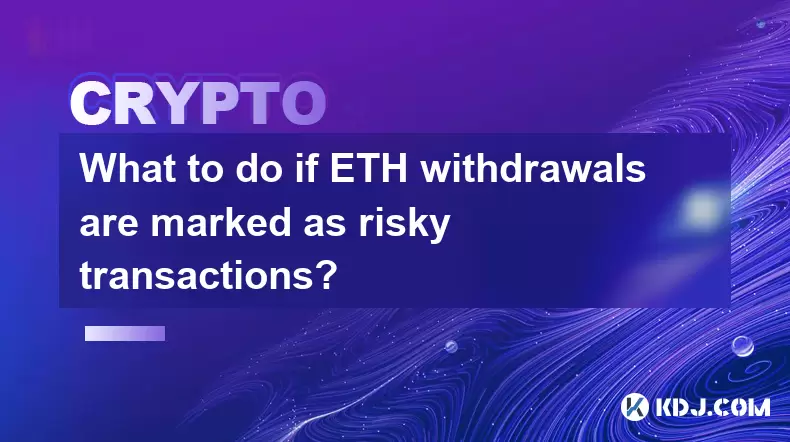
What to do if ETH withdrawals are marked as risky transactions?
May 12,2025 at 06:08pm
If your Ethereum (ETH) withdrawals are marked as risky transactions, it can be a stressful situation. Understanding why this happens and what steps you can take to resolve the issue is crucial. This article will guide you through the process of handling risky ETH withdrawals, providing detailed insights and actionable steps to mitigate the problem. Unde...
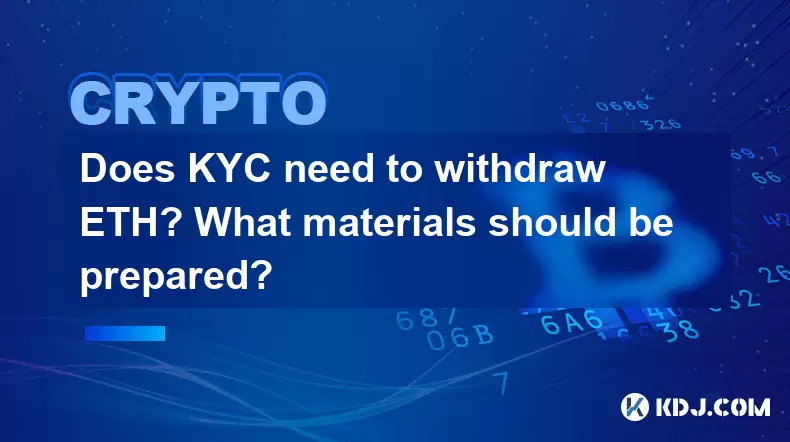
Does KYC need to withdraw ETH? What materials should be prepared?
May 12,2025 at 04:56pm
Does KYC Need to be Completed to Withdraw ETH? What Materials Should Be Prepared? Withdrawing Ethereum (ETH) from cryptocurrency exchanges often involves a process known as Know Your Customer (KYC). KYC is a mandatory procedure implemented by many financial institutions and cryptocurrency platforms to verify the identity of their users. This article wil...
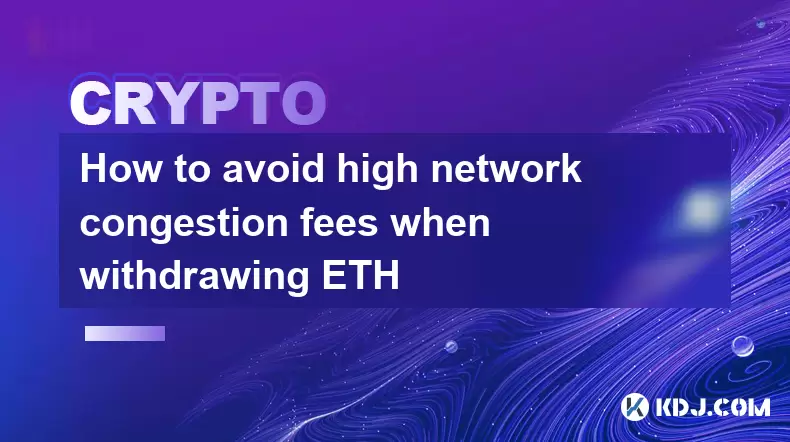
How to avoid high network congestion fees when withdrawing ETH
May 12,2025 at 06:28pm
When withdrawing Ethereum (ETH), network congestion can significantly impact the fees you pay. Understanding how to navigate these fees can save you a considerable amount of money. This article will guide you through various strategies to minimize these costs while ensuring your transactions are processed efficiently. Understanding Ethereum Network Cong...
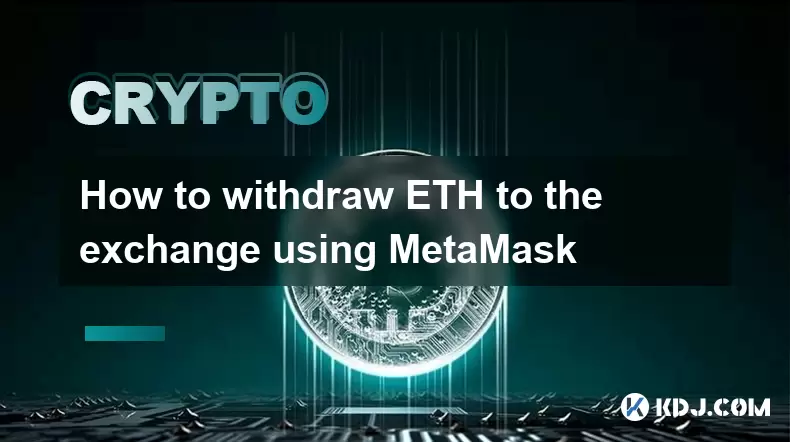
How to withdraw ETH to the exchange using MetaMask
May 12,2025 at 05:01pm
When it comes to managing your Ethereum (ETH) holdings, one common task is transferring your ETH from a wallet like MetaMask to an exchange. This process is essential for those looking to trade or sell their ETH. In this article, we will guide you through the detailed steps of withdrawing ETH to an exchange using MetaMask, ensuring you understand each p...
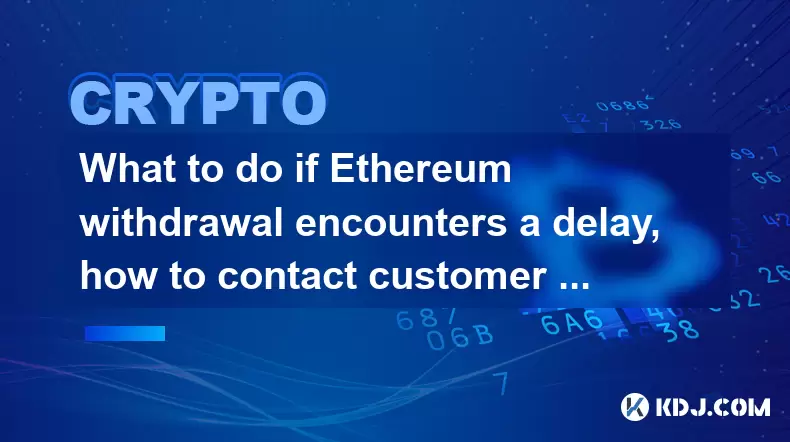
What to do if Ethereum withdrawal encounters a delay, how to contact customer service
May 12,2025 at 05:42pm
When dealing with Ethereum withdrawals, encountering delays can be frustrating and concerning. Understanding the reasons behind these delays and knowing how to effectively contact customer service can help resolve the issue more efficiently. This article will guide you through the steps to take if you experience a delay in your Ethereum withdrawal and h...
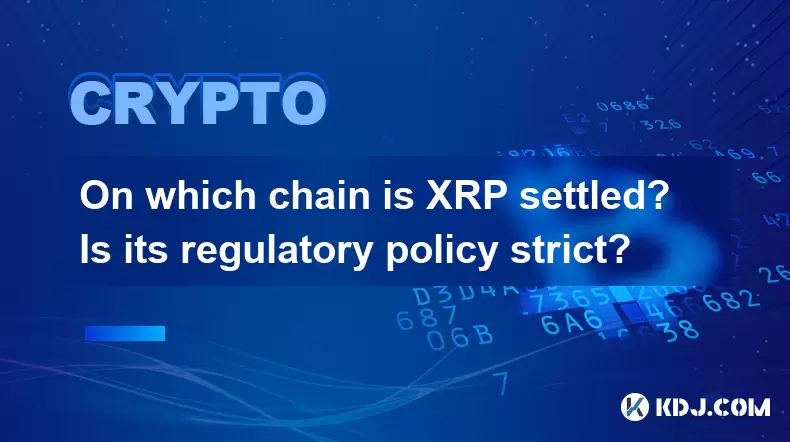
On which chain is XRP settled? Is its regulatory policy strict?
May 12,2025 at 03:14pm
XRP, a digital asset created by Ripple Labs, operates on a unique distributed ledger technology called the XRP Ledger. This ledger is distinct from other well-known blockchains like Bitcoin or Ethereum, as it was specifically designed to facilitate fast and efficient cross-border payments. The XRP Ledger does not rely on mining, instead, it uses a conse...

What to do if ETH withdrawals are marked as risky transactions?
May 12,2025 at 06:08pm
If your Ethereum (ETH) withdrawals are marked as risky transactions, it can be a stressful situation. Understanding why this happens and what steps you can take to resolve the issue is crucial. This article will guide you through the process of handling risky ETH withdrawals, providing detailed insights and actionable steps to mitigate the problem. Unde...

Does KYC need to withdraw ETH? What materials should be prepared?
May 12,2025 at 04:56pm
Does KYC Need to be Completed to Withdraw ETH? What Materials Should Be Prepared? Withdrawing Ethereum (ETH) from cryptocurrency exchanges often involves a process known as Know Your Customer (KYC). KYC is a mandatory procedure implemented by many financial institutions and cryptocurrency platforms to verify the identity of their users. This article wil...

How to avoid high network congestion fees when withdrawing ETH
May 12,2025 at 06:28pm
When withdrawing Ethereum (ETH), network congestion can significantly impact the fees you pay. Understanding how to navigate these fees can save you a considerable amount of money. This article will guide you through various strategies to minimize these costs while ensuring your transactions are processed efficiently. Understanding Ethereum Network Cong...

How to withdraw ETH to the exchange using MetaMask
May 12,2025 at 05:01pm
When it comes to managing your Ethereum (ETH) holdings, one common task is transferring your ETH from a wallet like MetaMask to an exchange. This process is essential for those looking to trade or sell their ETH. In this article, we will guide you through the detailed steps of withdrawing ETH to an exchange using MetaMask, ensuring you understand each p...

What to do if Ethereum withdrawal encounters a delay, how to contact customer service
May 12,2025 at 05:42pm
When dealing with Ethereum withdrawals, encountering delays can be frustrating and concerning. Understanding the reasons behind these delays and knowing how to effectively contact customer service can help resolve the issue more efficiently. This article will guide you through the steps to take if you experience a delay in your Ethereum withdrawal and h...

On which chain is XRP settled? Is its regulatory policy strict?
May 12,2025 at 03:14pm
XRP, a digital asset created by Ripple Labs, operates on a unique distributed ledger technology called the XRP Ledger. This ledger is distinct from other well-known blockchains like Bitcoin or Ethereum, as it was specifically designed to facilitate fast and efficient cross-border payments. The XRP Ledger does not rely on mining, instead, it uses a conse...
See all articles





















































































